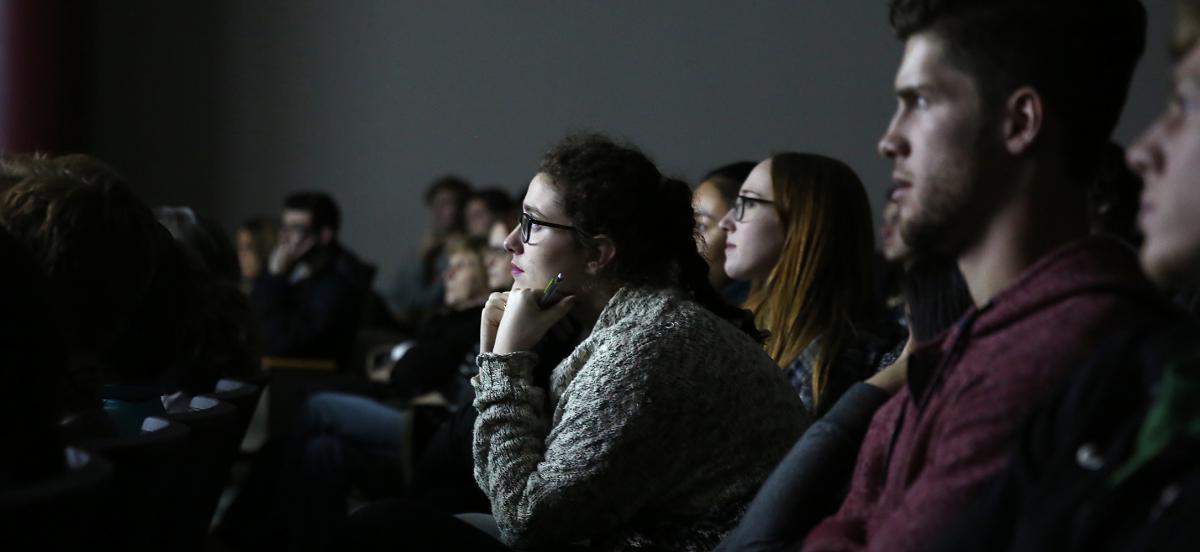Haverford College Offers New Visual Studies Minor

Photo by Leigh Taylor
Details
Starting this semester, students can declare this new minor, which aims to create a dynamic model for critical and creative engagement with visual experience across media, time, and cultures.
We live in a visual, digital world. And for years, Fords have sought, and spear- headed, ways to pursue the visual arts on campus. They’ve filmed documentaries about local worker cooperatives and the aftermath of the 2010 Gulf oil spill. They’ve enthusiastically registered for media-focused courses offered across the curriculum. Professors have organized events, such as a series of conversations called “What You See Is What You Get: Vision, Knowledge, and Technology Across the Disciplines.” In 2014, the College hosted a comprehensive conference on visual studies, with two days of roundtables and workshops featuring leaders in the field.
And now, it’s official: The College now offers a minor in visual studies for the first time, starting this semester. The minor is supported by the renovation of the Old Gym into the VCAM facility, all of which was made possible through the generosity of donors to the Lives That Speak campaign.
In this new major, students will study their place in a global system of images and engage in “critical making” by creating images, objects, and digital artifacts that develop their production skills. They will investigate the relationship between the visual world and structures of power, and weave what they learn into their diverse majors.
All students pursuing the minor will take “Introduction to Visual Studies,” taught for the first time last fall, which surveys how images produce cultural meaning and influence the ways we learn about current events.
Assistant Professor of Visual Studies Christina Knight, who directs the pro- gram, says the course sparked exciting conversations. Students frequented Knight’s office hours to discuss how they could potentially link more courses together to complete a minor.
“Student buy-in is the most important thing,” Knight says.
In addition to the introductory course, the minor also includes a senior-level capstone and four electives, which can be selected from three categories: visual literacy, lab or studio work, and ethics of the visual. The capstone course will give seniors the opportunity to use personal expertise from their majors to design a public-facing project, such as a symposium or exhibition to be displayed in the new VCAM building.
Many of the courses offered as part of the minor examine art, entertainment, and communication around the globe. It is Knight’s hope that students will bring this nuanced study of other cultures, visual and otherwise, to think critically about their own.
“It’s all part of being a global citizen,” she says.



